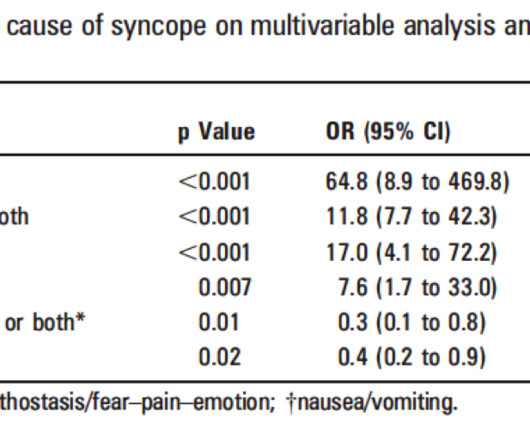A 50 year old man with sudden altered mental status and inferior STE. Would you give lytics? Yes, but not because of the ECG!
Dr. Smith's ECG Blog
DECEMBER 26, 2020
Side note: The differential of sudden persistent loss of consciousness with adequate hemodynamics is relatively short: seizure, intracranial hemorrhage, basilar artery occlusion. There is the appearance of STE in inferior leads II, III, and aVF (with STD in aVR), but this is entirely due to flutter waves which are only seen in those leads.










Let's personalize your content